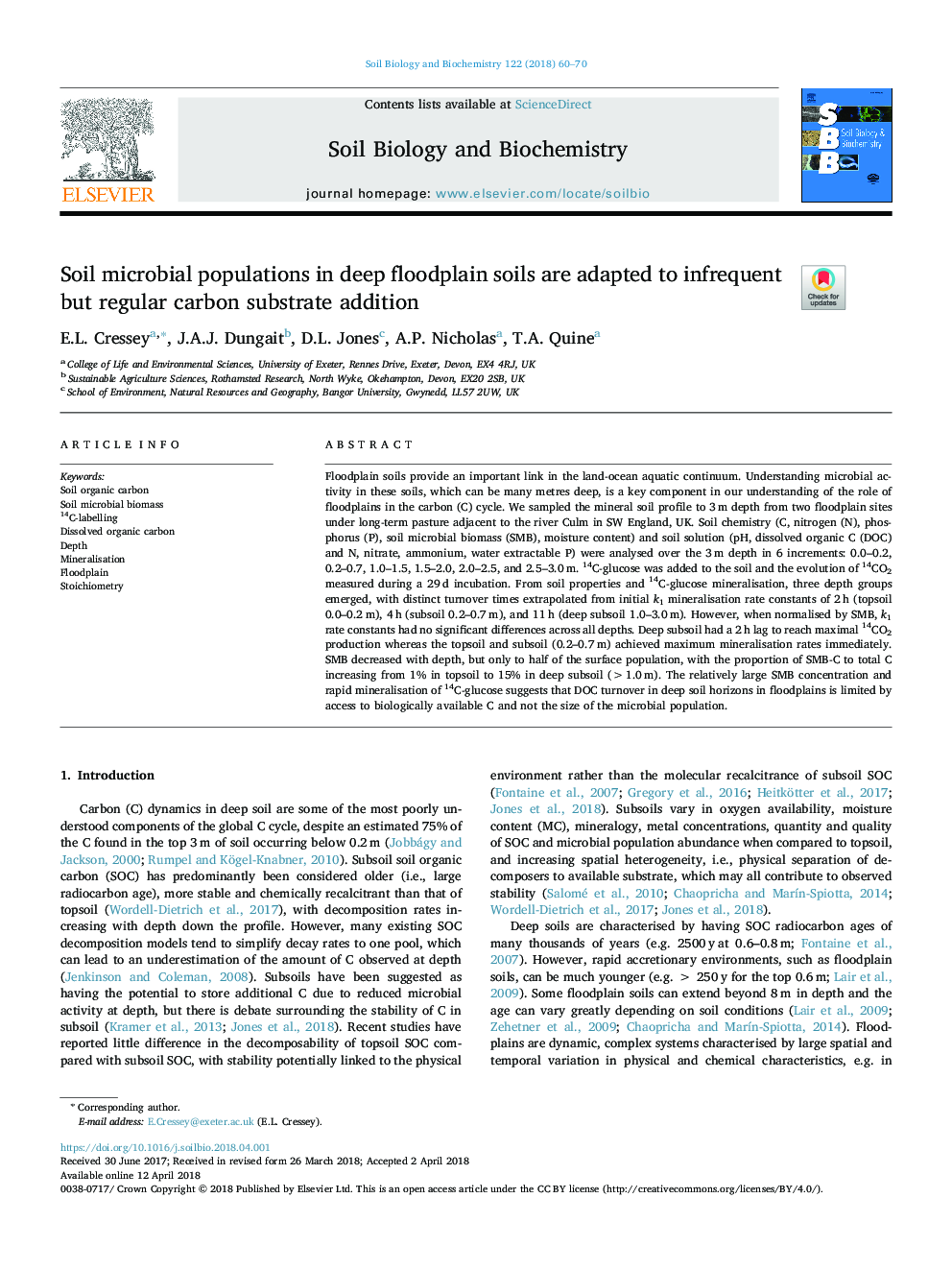| Article ID | Journal | Published Year | Pages | File Type |
|---|---|---|---|---|
| 8362674 | Soil Biology and Biochemistry | 2018 | 11 Pages |
Abstract
Floodplain soils provide an important link in the land-ocean aquatic continuum. Understanding microbial activity in these soils, which can be many metres deep, is a key component in our understanding of the role of floodplains in the carbon (C) cycle. We sampled the mineral soil profile to 3â¯m depth from two floodplain sites under long-term pasture adjacent to the river Culm in SW England, UK. Soil chemistry (C, nitrogen (N), phosphorus (P), soil microbial biomass (SMB), moisture content) and soil solution (pH, dissolved organic C (DOC) and N, nitrate, ammonium, water extractable P) were analysed over the 3â¯m depth in 6 increments: 0.0-0.2, 0.2-0.7, 1.0-1.5, 1.5-2.0, 2.0-2.5, and 2.5-3.0â¯m. 14C-glucose was added to the soil and the evolution of 14CO2 measured during a 29â¯d incubation. From soil properties and 14C-glucose mineralisation, three depth groups emerged, with distinct turnover times extrapolated from initial k1 mineralisation rate constants of 2â¯h (topsoil 0.0-0.2â¯m), 4â¯h (subsoil 0.2-0.7â¯m), and 11â¯h (deep subsoil 1.0-3.0â¯m). However, when normalised by SMB, k1 rate constants had no significant differences across all depths. Deep subsoil had a 2â¯h lag to reach maximal 14CO2 production whereas the topsoil and subsoil (0.2-0.7â¯m) achieved maximum mineralisation rates immediately. SMB decreased with depth, but only to half of the surface population, with the proportion of SMB-C to total C increasing from 1% in topsoil to 15% in deep subsoil (>1.0â¯m). The relatively large SMB concentration and rapid mineralisation of 14C-glucose suggests that DOC turnover in deep soil horizons in floodplains is limited by access to biologically available C and not the size of the microbial population.
Keywords
Related Topics
Life Sciences
Agricultural and Biological Sciences
Soil Science
Authors
E.L. Cressey, J.A.J. Dungait, D.L. Jones, A.P. Nicholas, T.A. Quine,
